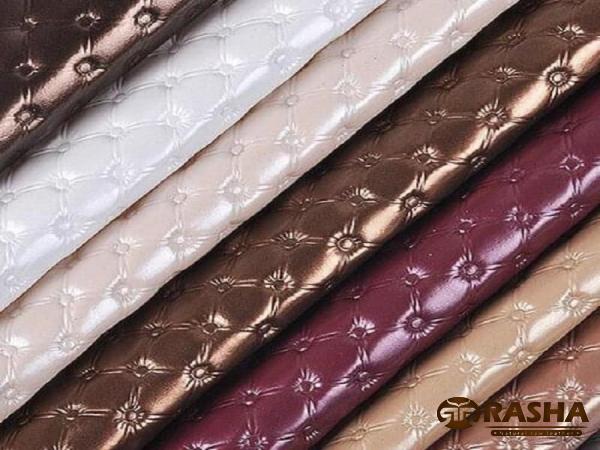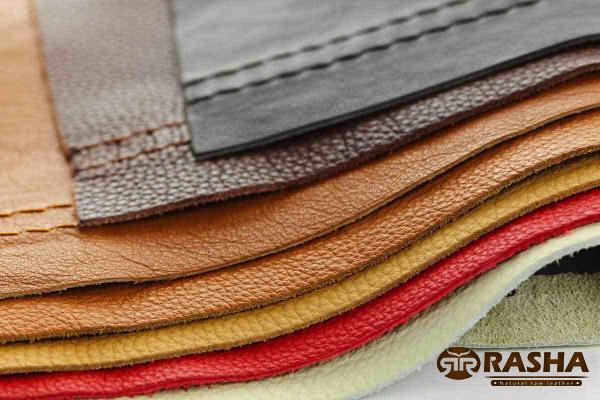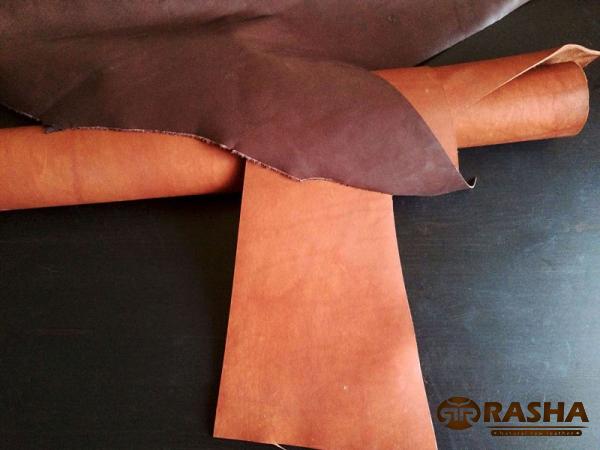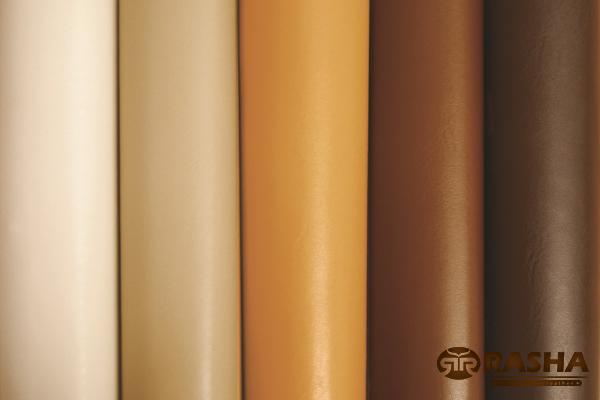Leather has been a treasured material for centuries, admired for its durability, elegance, and timeless appeal. Among the various types of leather available in the market, genuine leather stands out as the highest quality and most sought-after option. In this summary, we will explore the key characteristics, production processes, and benefits of genuine leather, shedding light on why it remains a popular choice for numerous industries worldwide. Genuine leather refers to leather that is made from the hide of an animal, typically cowhide, and is not artificially manufactured. It is considered the real deal, as it retains the natural characteristics of the animal, giving it a unique texture and appearance. Unlike faux leather, genuine leather offers exceptional strength and longevity, making it a preferred material for various high-end products such as furniture, garments, bags, accessories, and even luxury automobiles. The production of genuine leather begins with the careful selection of rawhides. These raw materials undergo a series of processes to transform them into a usable and desirable material. The first step involves curing the hides to prevent decay, followed by various mechanical and chemical processes aimed at removing hair, flesh, and other undesirable elements. The hides are then soaked, tanned, and dyed, depending on the desired color and finish. The final result is a supple and durable material that showcases the natural beauty of the hide. One of the main advantages of genuine leather lies in its durability.

leather
 With proper care, it can last for many years, often developing a unique patina that enhances its appeal. Unlike synthetic materials, genuine leather possesses excellent breathability, allowing air to circulate and preventing the buildup of moisture that can lead to unpleasant odors over time. This quality makes it particularly suitable for products like footwear and bags, as it helps maintain a comfortable and fresh environment for the user. Another distinguishing feature of genuine leather is its versatility. The natural grain pattern, texture, and color variations add to its aesthetic appeal, making each piece of leather unique. These characteristics give it an advantage over synthetic materials, which often struggle to replicate the same level of authenticity and beauty. Furthermore, genuine leather can be treated with various finishes, such as full-grain, top-grain, corrected-grain, and suede, each offering different qualities and visual attributes. This versatility allows for a wide range of design possibilities and customization options. In addition to its aesthetic and functional qualities, genuine leather also offers environmental benefits. The leather industry promotes the use of by-products from the meat industry, ensuring that a valuable resource is not wasted. Furthermore, when compared to synthetic materials, genuine leather has a lower carbon footprint and a longer lifespan, reducing the environmental impact associated with frequent replacements. However, it is essential to consider the tanning process, as it can involve the use of chemicals that may have negative effects on the environment if not properly managed. Opting for leather produced using environmentally friendly tanning methods, such as vegetable or chrome-free tanning, is a responsible choice for conscientious consumers. Despite its numerous advantages, genuine leather is not without its challenges. One primary concern is the price, as genuine leather tends to be more expensive than synthetic alternatives due to the intricate production process and the quality of the material. Additionally, leather products may require more extensive care and maintenance to prolong their lifespan and keep them looking their best. This could include regular cleaning, conditioning, and protection from excessive exposure to sunlight or moisture. However, the investment in genuine leather is often seen as worthwhile, considering the long-term benefits and the timeless elegance it brings to a product. In conclusion, genuine leather material is an exceptional choice for those seeking durability, versatility, and an unmistakable natural elegance. Its production process from carefully selected rawhides ensures the highest quality and authenticity. The ability to transform hides into a wide range of products makes genuine leather highly desirable for industries such as fashion, furniture, and automotive. Moreover, its durability, breathability, and unique aging properties contribute to its enduring popularity. As long as consumers remain aware of the environmental considerations and are committed to proper care and maintenance, genuine leather will continue to be a timeless and stylish choice.
With proper care, it can last for many years, often developing a unique patina that enhances its appeal. Unlike synthetic materials, genuine leather possesses excellent breathability, allowing air to circulate and preventing the buildup of moisture that can lead to unpleasant odors over time. This quality makes it particularly suitable for products like footwear and bags, as it helps maintain a comfortable and fresh environment for the user. Another distinguishing feature of genuine leather is its versatility. The natural grain pattern, texture, and color variations add to its aesthetic appeal, making each piece of leather unique. These characteristics give it an advantage over synthetic materials, which often struggle to replicate the same level of authenticity and beauty. Furthermore, genuine leather can be treated with various finishes, such as full-grain, top-grain, corrected-grain, and suede, each offering different qualities and visual attributes. This versatility allows for a wide range of design possibilities and customization options. In addition to its aesthetic and functional qualities, genuine leather also offers environmental benefits. The leather industry promotes the use of by-products from the meat industry, ensuring that a valuable resource is not wasted. Furthermore, when compared to synthetic materials, genuine leather has a lower carbon footprint and a longer lifespan, reducing the environmental impact associated with frequent replacements. However, it is essential to consider the tanning process, as it can involve the use of chemicals that may have negative effects on the environment if not properly managed. Opting for leather produced using environmentally friendly tanning methods, such as vegetable or chrome-free tanning, is a responsible choice for conscientious consumers. Despite its numerous advantages, genuine leather is not without its challenges. One primary concern is the price, as genuine leather tends to be more expensive than synthetic alternatives due to the intricate production process and the quality of the material. Additionally, leather products may require more extensive care and maintenance to prolong their lifespan and keep them looking their best. This could include regular cleaning, conditioning, and protection from excessive exposure to sunlight or moisture. However, the investment in genuine leather is often seen as worthwhile, considering the long-term benefits and the timeless elegance it brings to a product. In conclusion, genuine leather material is an exceptional choice for those seeking durability, versatility, and an unmistakable natural elegance. Its production process from carefully selected rawhides ensures the highest quality and authenticity. The ability to transform hides into a wide range of products makes genuine leather highly desirable for industries such as fashion, furniture, and automotive. Moreover, its durability, breathability, and unique aging properties contribute to its enduring popularity. As long as consumers remain aware of the environmental considerations and are committed to proper care and maintenance, genuine leather will continue to be a timeless and stylish choice.
Specifications of leather
 Understanding Genuine Leather Material: A Versatile and Timeless Choice for Businesses Introduction Leather has been a prized material across various industries for centuries, admired for its durability, elegance, and timeless appeal. Among the different types of leather available, genuine leather stands out as the highest quality and most sought-after option. In this article, we will delve deeper into the characteristics, production processes, and benefits of genuine leather, highlighting why it remains a popular choice for numerous businesses worldwide. 1. The Characteristics of Genuine Leather Genuine leather, as the name suggests, is made from the hide of an animal, typically cowhide. It is regarded as authentic leather due to its ability to retain the natural characteristics of the animal, such as texture, durability, and a unique appearance. Unlike faux leather, genuine leather offers exceptional strength and longevity, making it a preferred material for industries like fashion, furniture, automotive, and accessories. 2. The Production of Genuine Leather The production of genuine leather begins with the careful selection of high-quality rawhides. These raw materials undergo various processes to transform them into a desirable material. The first step involves curing the hides to prevent decay, followed by mechanical and chemical processes to remove unwanted elements such as hair and flesh. The hides are then soaked, tanned, and dyed, depending on the desired color and finish. The end result is a supple and durable material that showcases the natural beauty of the hide. 3. The Durability of Genuine Leather One of the main advantages of genuine leather lies in its durability. With proper care, genuine leather products can last for many years, oftentimes developing a unique patina that enhances their appeal. Unlike synthetic materials, genuine leather offers excellent breathability, allowing air to circulate and preventing the buildup of moisture that can lead to unpleasant odors. This quality makes it particularly suitable for products like footwear, bags, and upholstery, as it helps maintain a comfortable and fresh environment for the user. 4. The Versatility of Genuine Leather Another distinguishing feature of genuine leather is its versatility. The natural grain pattern, texture, and color variations add to its aesthetic appeal, making each piece of leather unique. These characteristics give genuine leather an advantage over synthetic materials, which often struggle to replicate the same level of authenticity and beauty. Furthermore, genuine leather can be treated with various finishes, such as full-grain, top-grain, corrected-grain, and suede, each offering different qualities and visual attributes. This versatility allows for a wide range of design possibilities and customization options across industries like fashion, interior design, and automotive. 5. The Environmental Benefits of Genuine Leather Genuine leather offers environmental benefits compared to synthetic materials. The leather industry promotes the use of by-products from the meat industry, ensuring that a valuable resource is not wasted. Furthermore, genuine leather has a lower carbon footprint compared to its synthetic counterparts. With its longer lifespan, it reduces the need for frequent replacements, which in turn reduces waste. However, it is important to consider the tanning process, as it can involve the use of chemicals that may have negative effects on the environment if not properly managed. Opting for leather produced using environmentally friendly tanning methods, such as vegetable or chrome-free tanning, is a responsible choice for conscientious businesses.
Understanding Genuine Leather Material: A Versatile and Timeless Choice for Businesses Introduction Leather has been a prized material across various industries for centuries, admired for its durability, elegance, and timeless appeal. Among the different types of leather available, genuine leather stands out as the highest quality and most sought-after option. In this article, we will delve deeper into the characteristics, production processes, and benefits of genuine leather, highlighting why it remains a popular choice for numerous businesses worldwide. 1. The Characteristics of Genuine Leather Genuine leather, as the name suggests, is made from the hide of an animal, typically cowhide. It is regarded as authentic leather due to its ability to retain the natural characteristics of the animal, such as texture, durability, and a unique appearance. Unlike faux leather, genuine leather offers exceptional strength and longevity, making it a preferred material for industries like fashion, furniture, automotive, and accessories. 2. The Production of Genuine Leather The production of genuine leather begins with the careful selection of high-quality rawhides. These raw materials undergo various processes to transform them into a desirable material. The first step involves curing the hides to prevent decay, followed by mechanical and chemical processes to remove unwanted elements such as hair and flesh. The hides are then soaked, tanned, and dyed, depending on the desired color and finish. The end result is a supple and durable material that showcases the natural beauty of the hide. 3. The Durability of Genuine Leather One of the main advantages of genuine leather lies in its durability. With proper care, genuine leather products can last for many years, oftentimes developing a unique patina that enhances their appeal. Unlike synthetic materials, genuine leather offers excellent breathability, allowing air to circulate and preventing the buildup of moisture that can lead to unpleasant odors. This quality makes it particularly suitable for products like footwear, bags, and upholstery, as it helps maintain a comfortable and fresh environment for the user. 4. The Versatility of Genuine Leather Another distinguishing feature of genuine leather is its versatility. The natural grain pattern, texture, and color variations add to its aesthetic appeal, making each piece of leather unique. These characteristics give genuine leather an advantage over synthetic materials, which often struggle to replicate the same level of authenticity and beauty. Furthermore, genuine leather can be treated with various finishes, such as full-grain, top-grain, corrected-grain, and suede, each offering different qualities and visual attributes. This versatility allows for a wide range of design possibilities and customization options across industries like fashion, interior design, and automotive. 5. The Environmental Benefits of Genuine Leather Genuine leather offers environmental benefits compared to synthetic materials. The leather industry promotes the use of by-products from the meat industry, ensuring that a valuable resource is not wasted. Furthermore, genuine leather has a lower carbon footprint compared to its synthetic counterparts. With its longer lifespan, it reduces the need for frequent replacements, which in turn reduces waste. However, it is important to consider the tanning process, as it can involve the use of chemicals that may have negative effects on the environment if not properly managed. Opting for leather produced using environmentally friendly tanning methods, such as vegetable or chrome-free tanning, is a responsible choice for conscientious businesses.
buy leather
 6. The Luxury Appeal of Genuine Leather Genuine leather exudes luxury and sophistication, making it highly desirable for businesses operating in sectors where perceived quality and elegance are important. In the fashion industry, luxury brands often utilize genuine leather to create high-end garments, handbags, and accessories that convey exclusivity and style. In the automotive industry, luxury cars frequently feature genuine leather upholstery, elevating the interior aesthetic and providing a luxurious driving experience. 7. The Longevity of Genuine Leather Products Investing in genuine leather products can save businesses money in the long run. While the upfront cost may be higher than synthetic alternatives, the durability of genuine leather ensures a longer lifespan, reducing the need for frequent replacements. Genuine leather products, such as furniture, bags, and shoes, can withstand daily wear and tear, making them a cost-effective choice for businesses that prioritize quality and longevity. 8. Genuine Leather as a Sign of Quality Genuine leather is often associated with quality, craftsmanship, and luxury. Businesses that incorporate genuine leather in their products can use it as a marketing tool to communicate the superior quality of their offerings. Whether it’s a leather handbag, a pair of leather shoes, or a leather-bound journal, the presence of genuine leather adds value and prestige, appealing to discerning customers who seek reliable and well-crafted products. 9. The Care and Maintenance of Genuine Leather To ensure the longevity of genuine leather products, proper care and maintenance are essential. Businesses should provide guidelines to customers on how to clean, condition, and protect their leather goods. This may involve using appropriate leather care products, avoiding exposure to excessive sunlight or moisture, and regular cleaning to remove dirt and stains. By educating customers on how to care for their genuine leather products, businesses can enhance customer satisfaction and maintain the product’s aesthetic appeal. 10. Genuine Leather and Corporate Gifting Genuine leather products make excellent corporate gifts for clients, partners, and employees. The high-quality and timeless appeal of genuine leather items, such as wallets, portfolios, or travel accessories, make them memorable and sophisticated gifts. The ability to customize these items with logos or personalized engravings adds a thoughtful touch, creating a lasting impression and strengthening business relationships. Conclusion Genuine leather material continues to be a popular choice for businesses across various industries due to its authenticity, durability, versatility, and timeless appeal. Understanding the characteristics, production processes, and benefits of genuine leather allows businesses to make informed decisions when choosing this material for their products. Whether it’s the fashion, furniture, automotive, or corporate gifting industry, incorporating genuine leather can enhance the perceived quality, elegance, and longevity of products, setting businesses apart from their competitors.
6. The Luxury Appeal of Genuine Leather Genuine leather exudes luxury and sophistication, making it highly desirable for businesses operating in sectors where perceived quality and elegance are important. In the fashion industry, luxury brands often utilize genuine leather to create high-end garments, handbags, and accessories that convey exclusivity and style. In the automotive industry, luxury cars frequently feature genuine leather upholstery, elevating the interior aesthetic and providing a luxurious driving experience. 7. The Longevity of Genuine Leather Products Investing in genuine leather products can save businesses money in the long run. While the upfront cost may be higher than synthetic alternatives, the durability of genuine leather ensures a longer lifespan, reducing the need for frequent replacements. Genuine leather products, such as furniture, bags, and shoes, can withstand daily wear and tear, making them a cost-effective choice for businesses that prioritize quality and longevity. 8. Genuine Leather as a Sign of Quality Genuine leather is often associated with quality, craftsmanship, and luxury. Businesses that incorporate genuine leather in their products can use it as a marketing tool to communicate the superior quality of their offerings. Whether it’s a leather handbag, a pair of leather shoes, or a leather-bound journal, the presence of genuine leather adds value and prestige, appealing to discerning customers who seek reliable and well-crafted products. 9. The Care and Maintenance of Genuine Leather To ensure the longevity of genuine leather products, proper care and maintenance are essential. Businesses should provide guidelines to customers on how to clean, condition, and protect their leather goods. This may involve using appropriate leather care products, avoiding exposure to excessive sunlight or moisture, and regular cleaning to remove dirt and stains. By educating customers on how to care for their genuine leather products, businesses can enhance customer satisfaction and maintain the product’s aesthetic appeal. 10. Genuine Leather and Corporate Gifting Genuine leather products make excellent corporate gifts for clients, partners, and employees. The high-quality and timeless appeal of genuine leather items, such as wallets, portfolios, or travel accessories, make them memorable and sophisticated gifts. The ability to customize these items with logos or personalized engravings adds a thoughtful touch, creating a lasting impression and strengthening business relationships. Conclusion Genuine leather material continues to be a popular choice for businesses across various industries due to its authenticity, durability, versatility, and timeless appeal. Understanding the characteristics, production processes, and benefits of genuine leather allows businesses to make informed decisions when choosing this material for their products. Whether it’s the fashion, furniture, automotive, or corporate gifting industry, incorporating genuine leather can enhance the perceived quality, elegance, and longevity of products, setting businesses apart from their competitors.










Your comment submitted.